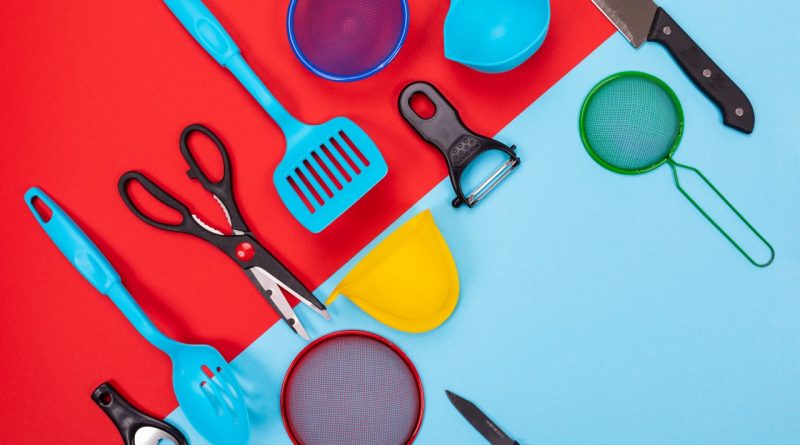Zwilling’s R&D Efforts In Next-Generation Blades
===
Zwilling, a name synonymous with high-quality kitchenware, has long been at the forefront of knife manufacturing. With a commitment to innovation and excellence, the company is now focusing its research and development efforts on next-generation blades. These advancements are not just about aesthetics; they encompass a wide range of scientific and engineering principles designed to enhance performance, durability, and user experience. This article delves into the latest innovations, materials, and engineering techniques that Zwilling is employing to create blades that cater to both home chefs and culinary professionals.
Innovations in Blade Technology: What’s New at Zwilling?
Zwilling’s latest research and development initiatives are pushing the boundaries of traditional knife design. One of the standout innovations is the introduction of advanced blade geometries that optimize cutting efficiency. These new designs reduce the force required for slicing, allowing for smoother cuts with less effort. This is particularly beneficial for home cooks who may not have the experience or strength of a professional chef, making meal preparation less taxing.
Another significant advancement is the incorporation of smart technology into blade design. Zwilling is exploring the use of sensors that can monitor the cutting angle and technique, providing real-time feedback to users. This feature aims to improve cutting skills and ensure optimal performance, which is especially valuable for culinary students and enthusiasts looking to refine their techniques.
Additionally, Zwilling is committed to sustainability and is investigating eco-friendly manufacturing processes. This includes minimizing waste during production and utilizing renewable energy sources. By merging innovation with environmental responsibility, Zwilling is not only enhancing blade technology but also aligning with the values of today’s conscientious consumers.
Materials Matter: The Science Behind Next-Gen Blades
The choice of materials is crucial in the development of next-generation blades, and Zwilling is leveraging cutting-edge metallurgy to enhance performance. High-carbon stainless steel remains a staple, but the company has been experimenting with various alloys that offer superior hardness and corrosion resistance. These advanced materials can achieve a sharper edge while maintaining durability, ensuring that the knives retain their performance over time.
Zwilling is also exploring the use of composite materials, which can combine the best properties of different substances. For instance, incorporating carbon fiber or ceramic particles into the steel matrix can result in a lighter blade that doesn’t compromise on strength. This innovation is particularly appealing to chefs who require maneuverability without sacrificing the cutting power of their knives.
Furthermore, Zwilling’s commitment to rigorous testing ensures that every new material meets high-performance standards. The company employs various techniques, including cryogenic treatment and heat treatment, to optimize the molecular structure of the blades. This level of precision not only enhances the blades’ performance but also extends their lifespan, making them a worthwhile investment for any kitchen.
Precision Engineering: Crafting the Perfect Cutting Edge
The engineering processes behind Zwilling’s next-generation blades are as innovative as the materials themselves. Utilizing advanced computer-aided design (CAD) software, Zwilling’s engineers are able to simulate the performance of blades before they are physically produced. This allows for iterative testing and refinement, ensuring that each blade is optimized for its intended purpose, whether it be slicing, dicing, or chopping.
Zwilling’s production facilities employ state-of-the-art machinery that allows for unparalleled precision in blade manufacturing. Techniques such as laser sharpening and robotic finishing ensure that each blade achieves a razor-sharp edge. The company’s focus on precision engineering is evident in the meticulous attention to detail that goes into each knife, resulting in a product that is not only functional but also aesthetically pleasing.
Moreover, Zwilling emphasizes ergonomic design in its blade engineering. The balance and weight distribution of a knife are critical for optimal handling. By studying user feedback and employing ergonomic principles, Zwilling engineers are able to create knives that feel comfortable in the hand, reducing fatigue during prolonged use. This holistic approach to design and engineering ensures that the blades are as user-friendly as they are technologically advanced.
User Experience: Enhancements for Home Chefs and Pros
At the heart of Zwilling’s R&D efforts is a commitment to enhancing the user experience for all types of cooks. The latest innovations are tailored to meet the needs of both home chefs and culinary professionals. For instance, the new blade designs not only improve cutting efficiency but also make maintenance easier. Many of the next-generation blades feature self-sharpening capabilities, which reduce the need for frequent honing and sharpening.
In addition to performance improvements, Zwilling is focusing on the aesthetics of its knives. The company recognizes that a visually appealing knife can enhance the overall cooking experience. Therefore, new finishes and handle designs are being developed to provide not only functionality but also style. This attention to design helps to create a connection between the cook and their tools, making cooking a more enjoyable experience.
Finally, Zwilling is committed to providing educational resources for users. This includes instructional videos and guides on proper knife techniques, care, and maintenance. By empowering users with knowledge, Zwilling aims to elevate the culinary skills of home cooks and professionals alike, ensuring that they can make the most of their next-generation blades.
===
In summary, Zwilling’s research and development efforts in next-generation blades are setting new standards in the culinary world. By focusing on innovations in blade technology, utilizing advanced materials, and employing precision engineering, Zwilling is creating knives that enhance the cooking experience for everyone. As the company continues to invest in sustainability and user-centered design, it is clear that the future of kitchen knives looks promising, making it an exciting time for both home cooks and professionals.
